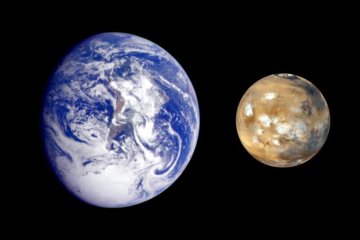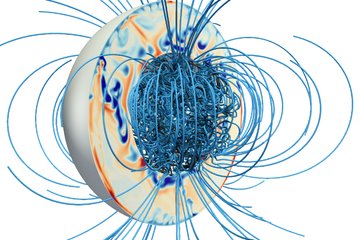All genres
1.
Journal Article
Discovery of a New Retrograde Trans-Neptunian Object: Hint of a Common Orbital Plane for Low Semimajor Axis, High-Inclination TNOs and Centaurs. Astrophysical Journal 827 (2), L24 (2016)
2.
Journal Article
Near-infrared spatially resolved spectroscopy of (136108) Haumea's multiple system. Astronomy and Astrophysics 593, A19 (2016)
3.
Journal Article
Comet formation in collapsing pebble clouds. What cometary bulk density implies for the cloud mass and dust-to-ice ratio. Astronomy and Astrophysics 587, A128 (2016)
4.
Journal Article
A laboratory study of water ice erosion by low-energy ions. Mon. Not. Roy. Astron. Soc. 462 (3), pp. 3361 - 3367 (2016)
5.
Journal Article
Acceleration of cometary dust near the nucleus: application to 67P/Churyumov-Gerasimenko. Mon. Not. Roy. Astron. Soc. 461 (4), pp. 3410 - 3420 (2016)
6.
Journal Article
Sublimation-Driven Activity in Main-Belt Comet 313P/Gibbs. Astrophysical Journal 800 (1), L16 (2015)
7.
Journal Article
The formation of the solar system. Physica Scripta 90 (6), 068001 (2015)
8.
Journal Article
Search for the Return of Activity in Active Asteroid 176P/Linear. Astronomical Journal 147 (4), 89 (2014)
9.
Journal Article
The Albedo-Color Diversity of Transneptunian Objects. Astrophysical Journal 793 (1), L2 (2014)
10.
Talk
Compression of pebbles in collapsing pebble clouds. Planet Formation and Evolution, Duisburg, Germany (2016)
11.
Talk
COSIMA - In-situ dust particles measurements in the inner coma of comet 67P/Churyumov-Gerasimenko. American Astronomical Society, DPS meeting #47, Washington DC, USA (2015)
12.
Talk
In-Situ Cometary Particle Measurements in the Inner Coma of Comet 67P/Churyumov-Gerasimenko. 46th Lunar and Planetary Science Conference, The Woodlands, Texas, USA (2015)
13.
Talk
Compaction of ice pebbles in collapsing pebble clouds and the dust-to-ice ratio of comets. European Planetary Science Congress 2015, Nantes, France (2015)
14.
Poster
Comet formation in collapsing pebble clouds: pebble formation. American Astronomical Society, DPS meeting #48, Pasadena, USA (2016)
15.
Poster
Size matters? Monomer radius and the transition from fractal to compact ice aggregates. 615. WE-Heraeus-Seminar "How primitive are comets?", Bad Honnef, Germany (2016)
16.
Poster
COSIMA at Comet 67P/Churyumov-Gerasimenko After Perihelion. AGU Fall Meeting, San Francisco, USA (2015)
17.
Poster
COSIMA at Comet 67P/Churyimov-Gerasimenko After Perihelion. AGU Fall Meeting, San Francisco, USA (2015)











